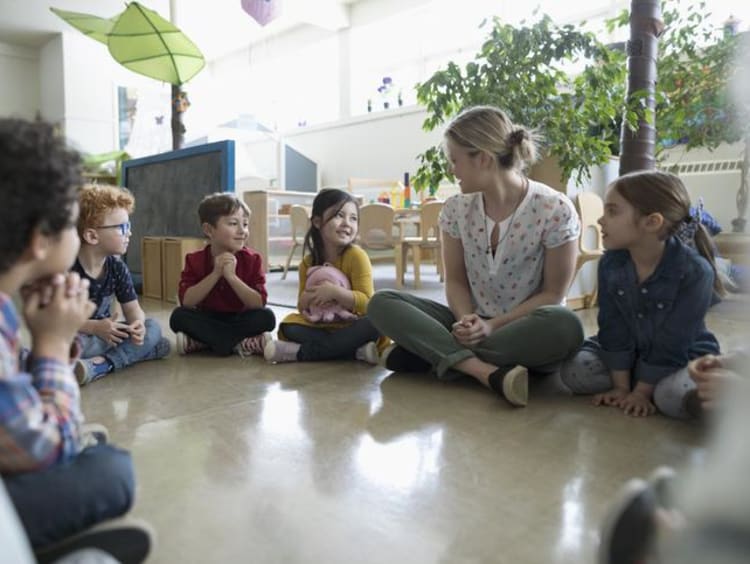3 Ways to Integrate Purposeful Dialogue in the Classroom
By Mirta Espinola, EdD
Faculty, rand Canyon University

As a college student I was instructed in the theories of learning from Bruner and Vygotsky, so my main goal when I entered the classroom was to implement opportunities for students to dialogue purposefully.
I had a curriculum to follow, but through these proponents of education along with professional development ringing the same message I followed suit. Whether elementary, middle or high school is taught, dialogue supports learning. Try these quick implementations to engage learners in purposeful dialogue.
Modeling
After direct teach or modeling (at any grade level) ask students to “dialogue” what was just modeled. This allows students time to internalize the content, make connections, activate schema and engage in short discussions with peers. Through dialogue, students are confirming and affirming the content and will be ready to begin their work (independent practice). Use a timer and assign them two minutes to dialogue.
Students progress as they practice. In addition, purposeful dialogue supports engagement, builds classroom community, helps with discipline issues and allows students to internalize content. Students seem to want to converse after the modeling portion of the lesson cycle because they have been listening for some time, consequently this offers students time to talk in a constructive manner.
Routine Dialogue
During Writing Workshop, allow students an opportunity to “dialogue” for two minutes before the brainstorming, drafting, editing and/or revising stage of the writing process. As a result, students are able to share their ideas before putting pen to paper. Dialoguing before any stage in the writing process allows students to be actively engaged in their learning and verbally analyze their ideas before writing or drafting.
Peer editing and peer revising constitutes opportunities for students to dialogue and engage with one another. Additionally, dialoguing supports classroom climate, aids with discipline, and supports students engaging in higher order thinking skills. There should be prompts that are already set in place that promote “purposeful dialogue” during this time. Routines will also need to be set before this “just happens.”
Setting a Purpose
During learning stations or group work, students are going to be engaged in quiet conversation. Before they begin, two minutes should be allotted to review directions and set their purpose for learning, thus when they work in their groups they are engaged at a higher level of thinking. In my experience, setting a purpose for learning as a group fosters engagement. Prompting materials are available and set routines can facilitate that they set a purpose for learning which eventually becomes an educational habit.
Additionally, allow students two minutes at the end of the session to discuss what they have learned (wrap-up). A quick verbal/written formative assessment can take place in small group guided reading, learning stations, Socratic Seminar and other group activities. This process is a cohesive model to implement purposeful dialogue in various settings.
I have used this in all grade levels and content areas (math, reading, writing, science, social studies) from pre-K to 12th grade. I set the routines in the first six to eight weeks of the year fostering engagement through consistent purposeful dialogue throughout the year. I use anchor charts to foster the routines in the learning stations and other group activities and by the end of the eight weeks, their routines are pretty automatic, and I can do away with the prompting anchor charts. There are little reminders in all the learning stations of how to engage in these two-minute conversations.
Mirta has taught ten years in Title I Elementary, Middle, and High schools and held specialists and administrative roles in public education. She holds a BA from The University of Texas-Pan American, MEd from The University of Texas at San Antonio, and a Principal-Administrative Certificate from West Texas A&M University, and a doctorate from Trident University. She is certified in EC-12 English, Special Education, ESL, Education and Principal-Administrator. Additionally, she has worked in higher education for about five years including the University of Texas at San Antonio, PBS Teacherline, Ohio Christian University, Grand Canyon University, South Wesleyan University and South Texas College. She is very passionate about what she does and is blessed be part of Grand Canyon University.
The views and opinions expressed in this article are those of the author’s and do not necessarily reflect the official policy or position of Grand Canyon University. Any sources cited were accurate as of the publish date.


